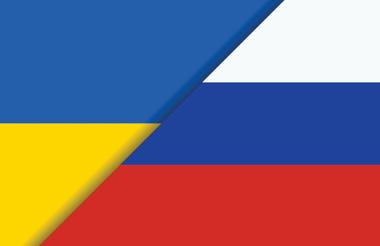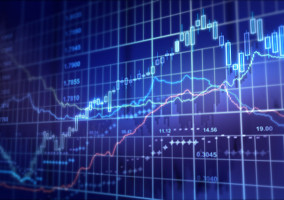Russia’s full invasion of Ukraine in February shocked financial markets. Given the profound geopolitical significance – the first time a great power has invaded an independent European sovereign state since World War II – we believe it has more fundamental medium and long-term implications for economies and markets than most ‘typical’ geopolitical events, presenting both opportunities and risks for charity portfolio managers.
1. Commodities
Russia’s position as a commodity powerhouse, coupled with high commodity prices, is likely to be what emboldened Putin to take revisionist steps over Ukraine. While we expect ongoing commodity trade between Russia and the West in the near term, there is growing political pressure for the West to move away from Russian energy in the medium and long term. Furthermore, investors cannot rule out periods of supply disruption as Russia becomes a less dependable partner, with a particular risk for natural gas given Europe’s high energy dependency.
The medium-term implication of this dependency will be a concerted effort by Europe to diversify to other suppliers. The second implication is likely to be an even more accelerated path towards renewable energies as these are seen as an important basis for national security in addition to the green agenda. We expect the nuclear, hydrogen, wind and solar industries to take on added importance, creating significant opportunities for charity investors.
2. Western security
Putin has a mission to right the perceived inequities of the Soviet Union’s dissolution. Should Russia prevail in Ukraine, the bordering European Union (EU) countries will face greater risk of destabilisation, and investors should expect a higher sovereign-risk premium to compensate them for investing in these countries.
Most European countries have increased defence spending in recent years, but several countries remain well below the 2% of GDP NATO target. We expect accelerated defence spending will be an important area of growth in future years, resulting from what we believe will be the ‘Cold War 2.0’. This has already been vindicated by Germany’s pledge to raise defence spending from 1.4% of GDP to 2% and to set up a €100bn defence fund. While a large portion of spending would be state-led in critical areas such as space, hypersonic weapons and drones, there will be an ever-growing portion of private-sector defence expenditure as companies increase spending in the protection of their critical infrastructure and IT systems, through investment in cyber-security.
3. Inflation and central-bank policy
Putin’s invasion of Ukraine has been tactically orchestrated not only to coincide with Europe’s seasonally high demand for Russian gas, but also with a period of high commodity prices, excessive monetary and fiscal stimulus and supply-chain disruptions, which have fed through to the highest consumer-price inflation in 40 years.
We would expect the threat of further sanctions and heightened tensions to keep energy prices high, but unless there is a material interruption to the energy supply, the economic hit (thereby causing stagflation) could be less. This, in turn, will allow the central banks to start their tightening cycle, but may reduce the terminal rate. There is, however, clear policy divergence between central banks; the US Federal Reserve is now in monetary tightening mode, whereas the European Central Bank is affected by the monetary policy dilemma of simultaneous inflation and weak economic confidence.
4. Sino-Russian cooperation
Despite export restrictions on critical technology by the US and EU, Russia’s lack of dependence on high-end manufacturing is likely to prevent it experiencing significant disruption. Instead, we may see Russia and China increase efforts to cooperate in trade and technology. However, the asymmetric economic balance of power, with China’s GDP nine times larger than Russia’s in nominal terms, means that Moscow won’t want to become overly dependent on Beijing. Rather than an official mutual defence pact, we expect the relationship will be one of economic and diplomatic convenience.
As Russia becomes increasingly self-funded but unable to import from the West, the country will have few demands for US dollars. Latest available data from June 2021 showed that Russia’s central bank had reduced its US Treasury holdings to close to zero, but still had almost $300bn of reserve assets on deposit with Western central banks that have now been frozen. President Putin recently stated a growing propensity for Sino-Russian trade to take place in local currencies, and Chinese officials are also pushing for greater local-currency usage. Charity investors must take account of the evolving position of the US dollar and other currencies as they perform their continuing asset allocation in a world in which Russia and China may become more closely economically aligned.
Alan Goodwin is head of charities at Newton Investment Management
Important information
These opinions should not be construed as investment or other advice and are subject to change. This document is for information purposes only. Any reference to a specific security, country or sector should not be construed as a recommendation to buy or sell investments in those securities, countries or sectors. Issued in the UK by Newton Investment Management Limited, The Bank of New York Mellon Centre, 160 Queen Victoria Street, London, EC4V 4LA. Registered in England No. 01371973. Newton Investment Management Limited is authorised and regulated by the Financial Conduct Authority, 12 Endeavour Square, London, E20 1JN and is a subsidiary of The Bank of New York Mellon Corporation.
Related articles












